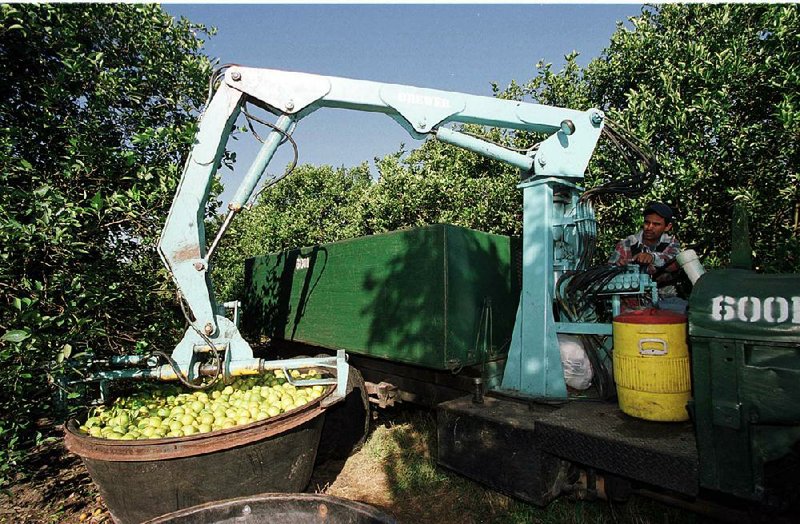Florida's orange production is expected to continue to decline as a citrus-greening disease wreaks havoc on the U.S.' biggest producer.
The current crop is the smallest in almost five decades.
Farmers will probably collect about 90.75 million boxes in the coming year, according to the average of four analysts surveyed by Bloomberg News. That would be down 6.2 percent from 96.7 million boxes in the current season ending Sept. 30, according to government data, and would be the lowest since 1965.
Citrus greening, spread by Asian citrus psyllids and first discovered in Florida in 2005, is responsible for the loss of an estimated 100,000 acres and $3.6 billion in state revenue since 2007, according to the University of Florida.
"Tree numbers continue to contract because farmers are not replacing infected trees at a pace enough to match the annual mortality rate of about 3 percent," said Tom Spreen, an industry consultant, who's been analyzing the market for more than two decades. Even if yields are steady, the disease has discouraged farmers from replanting, he said.
The U.S. Department of Agriculture on Oct. 9 will issue its first forecast for the next crop.
Orange juice has fallen 13 percent on ICE Futures U.S. in New York in the past year to $1.287 a pound as slowing demand tops supply concerns.
In the year ending Sept. 30, Americans will consume 675,000 tons of orange juice, down from 716,000 a year earlier and the lowest since at least 1986, USDA data show. Stockpiles will rise 7.5 percent to 373,000 tons.
A proliferation of juice and beverage options and consumers seeking drinks with fewer calories contributed to the slide in demand, according to Ross Colbert, a New York-based global beverage strategist at Rabobank International.
By 2014, there were 452,364 acres planted with oranges for commercial use, the fewest since at least 1966, according to the most recent data available from the Florida Department of Citrus.
In addition to rising costs to control disease, urban sprawl and hurricane damages also contributed to the decline, according to Andrew Meadows, a spokesman for Florida Citrus Mutual, the state's biggest grower organization.
"Some growers think that they can bring production higher," Meadows said in a telephone interview. "Some are less optimistic, or even borderline pessimistic, because the cost to combat the disease is too high."
Spreen, former chairman of the University of Florida's Food and Resource Department, said annual farm costs to fight the greening disease have increased to $2,000 an acre from about $1,200 five years ago. The costs include fertilizer, herbicides and fungicides.
"Farmers have tried many things, but nothing has been effective to eradicate the disease," he said. "Another big problem is getting demand up."
Business on 08/22/2015
